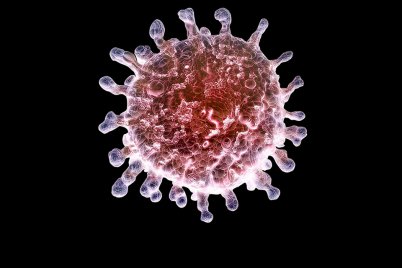
It’s a Thursday night in central London and a community of men, and some women, are arriving for their monthly gathering.
They enter the nightclub in the city’s Chinatown, located at the southern-most tip of the well-known entertainment district of Soho. Other nights out in this area begin with quite different intentions, fun and carefree — but not tonight.
Once a month for almost two years, many of those here have been meeting to discuss an issue affecting their lives — and their health. Newcomers come and go, but all those with the courage to attend, benefit from this chance to air their troubles in an open forum with people just like them.
Tonight almost 60 of them have gathered for discussion.
Once inside, they filter downstairs where seats and a stage await them for the night. Upstairs, crowds of men drink and toast the end of another working today, oblivious to the discussions taking place below them.
“After a nine-year relationship with crystal meth, I divorced [the drug] three years ago,” says a man in his twenties, originating from Thailand. He is up on the stage where many will follow suit — and many have preceded him — over the years.
This man, along with many in the room, is here to get clean. More accurately, he’s here to stay clean. The drug he is trying to rid himself free of is not just any drug, it’s part of a select range used by many in the room to have sex. Chemsex.
“Chemsex is the use of drugs in a sexual context,” says Dr Adam Bourne, Lecturer in Public Health at the London School of Hygiene and Tropical Medicine. Dr Bourne is part of the School’s Sigma Research group, which specialises in the behavioural and policy aspects of HIV and sexual health.
In the UK today, there are three main chemical contenders on the scene: Mephedrone, often known as M-Kat or Meow meow, Crystal Methamphetamine, known as Ice, and gamma hydroxybutyrate (GHB), referred to commonly as ‘G’.
“They give an edge to sex, they give a higher level of intimacy, they make sex feel more arousing and make you feel more aroused,” says Dr Bourne.
The chemsex scene has been thriving in London and many other cities with large gay communities, such as Manchester and Brighton. The scene has been growing and flourishing for many years and with greater numbers using it, comes greater — and easier — access to it.
In the Soho nightclub, man after man takes to the stage to share their thoughts. They have approximately five minutes to share their experiences, many of which are told through poetry, before a bell is rung to stop them. They don’t all speak about their sex life, or experiences with chemsex, but instead of their views on pornography, which is the chosen theme for tonight’s event.
Here, what they explicitly say is not the point. The men are united through their history with chemsex, this is what brings them together, and when anyone needs to address that issue specifically, they do. Like the younger man from Thailand just did.
Gay sex and drugs
In the 2014 British Crime Survey, the greatest use of illicit drugs was by gay and bisexual men, with 33% of them having taken drugs within the last year. The equivalent among heterosexual men was 11.1%.
“Gay men have always used drugs more commonly than the general population,” says Dr Bourne.
These drugs go beyond just those used for chemsex, but this trio of sexual aids are the greater concern for researchers like Dr Bourne. The goal of using chemsex drugs, or other aids, in improving your sex life is not bad in itself, or necessarily harmful, but the consequences of using them can be, particularly on your health.
“These drugs can allow you to have sex for long periods of time, and the longer you have sex for, the more likelihood you have of penile abrasions, or cuts and tears,” says Dr Bourne.
As well as pain, this gives an increased likelihood of an infection being transmitted, such as HIV. The ability to last longer than you otherwise would naturally also increases the possibility of having sex with more than one person in the same session.
“They also often happen in group environments, so having sex with more than one person at one time is quite a common feature of chemsex as well,” says Dr Bourne.
This is otherwise known as a chemsex party and is a scene familiar to many in the gay community, whether they partake or not. The majority of gay men don’t enter, or care for, this scene, but for those that do, significant issues can arise.
“One of the big concerns among gay men’s health at the moment is around chemsex,” says Dr Ford Hickson, a fellow Lecturer in Public Health at the School and specialist in HIV among men who have sex with men (MSM).
“There’s concern that both the drugs in themselves cause ill health and that combining sex and drugs facilitates HIV and other STIs,” says Dr Hickson.
In 2014, 45,000 men were living with HIV in the UK. They were the largest demographic to get newly infected with the virus, making up 54% of new infections, despite representing just 2-3% of the UK population.
“Sex combined with drugs typically features more risk than sober sex,” says Dr Hickson who studies risk behaviour and its role in the health of MSM.
In a 2015 study, Dr Bourne and Dr Hickson analysed data from the European MSM Internet Survey (EMIS) and interviewed 30 gay and bisexual men from three boroughs in South London, where chemsex is widely used. Almost one third of men interviewed had found it difficult to control their behaviour while under the influence of drugs and reported they had engaged in riskier behaviour, which they then regretted.
Aside from behaviour, a greater area of concern among public health teams stemming from the use of these drugs, is the risk of overdose – and potentially death.
“Several of the overdose deaths among gay men in South London over the last few years have been GHB-related,” says Dr Bourne.
GHB is of particular concern as, according to Dr Bourne, the drug is newest on the scene with little known about using it safely. The drug requires being taken in extremely small doses, increasing the likelihood of accidental overdose.
“It’s very easy to overdose on GHB,” says Dr Bourne.
But as research in the area grows, the importance of addressing mental health is also evident. Users of crystal methamphetamine often report acute mental health problems, such as paranoid attacks or anxiety, according to Dr Bourne.
The feelings following an intense rush of euphoria can also leave a void in the mind – and body — as the arousal disappears and the ability to feel such an extreme level of happiness is taken away.
At this point, the challenge of wanting – and needing – to feel like that again kicks in, fuelling an addiction.
Life with chemsex…at the tap of the phone
“After injecting (Mephedrone), your whole brain is washed with endorphins and pleasure and euphoria…it’s probably the closest thing to pure ecstasy I’ve ever felt,” says psychology student Duncan Hamilton, 25.
Hamilton’s initiation into the chemsex scene was unexpected — and all began unwittingly.
“Someone just came over with some mephedrone, I had no idea what mephedrone even was,” says Hamilton. “I tried it, liked it, kept at it, then moved to London and it took on a life of its own.”
Like many engaging in the activity, the frequency of Hamilton’s chemsex life was based on access. His first encounter occurred in Halifax, Yorkshire, with one partner bringing the drugs into his home. Occurrences continued solely with this partner and took place every few months.
But in London, things changed. The numbers went up drastically.
“In London you could literally do it 24/7 if you wanted to, it’s constantly available,” says Hamilton.
All it took was the tap of a phone, for Hamilton to get the drugs and sex he wanted, almost instantly. His ‘taps’ were on dating apps, readily available to him, providing access to people just kilometres away and willing to satisfy his urges.
“You’d feel tempted, get on your phone and maybe an hour later you’d be with someone. It was that easy,” he says.
But life itself became less easy as Hamilton’s chemsex life grew and his desires to stimulate his brain, and libido, were met. As the frequency, and number of partners, inevitably grew, so did his sexually transmitted infections (STIs).
“I probably had chlamydia or gonorrhea every couple of months, if not monthly,” he says. He was diagnosed with HIV a few years before his chemsex life began, meaning this wasn’t a risk to him — but was to others if their sex, or injecting, was unsafe.
“Within the chemsex scene there’s almost an expectation of you being positive…most people you’re playing with are positive,” he says.
This statement has some truth behind it as the EMIS study found that more than 60% of those reporting to have used drugs in the past four weeks were HIV positive. In general, the surveys and interviews found that all drugs, not just those linked to sex, were more commonly used among men living with HIV.
“Safety wasn’t really a priority,” says Hamilton.
But in line with the range of risks faced by chemsex, Hamilton’s mental health also declined rapidly and he became suicidal due to his brain being “emptied of pleasure”. He describes feeling psychologically incapable of happiness, which took him as far as balancing on a bridge on the river Thames. On another occasion he injected air into his veins. Luckily, both attempts were unsuccessful.
“Suicide was an inevitable thing to feel,” he says.
Hamilton’s wake-up call came in the form of Hepatitis C.
After failing to use clean needles, Hamilton came into contact with blood infected with Hepatitis C — a virus that infected and damages the liver — and was later diagnosed with the virus. His treatment lasted more than six months and involved a combination of interferon therapy and antiviral drug, Ribavirin.
The wake-up call came with both the disease and the side-effects associated with the long-duration treatment, which can include flu-like symptoms, anaemia, weight loss and depression.
His story, and epiphany to stop, were shared on stage at the club in Soho, where he is now a regular. By opening up to people who could share his insight, he learned to say no.
“I don’t engage with it because I know where it leads me,” he says. “But the temptation is still there.”
The ability to instantly succumb to his temptations at the tap of a button, however, has led to drastic changes in his use of technology, including the use of a child lock on his phone for which the pin remains unknown.
“I only have text messages and phone numbers on my phone.”
The desire remains, but his access has gone – a scenario that applies not just to Hamilton, or the gay community, but the population as a whole.
It comes down to risk and behaviour…and access to it
“All sex carries risk,” says Dr Hickson. “But that doesn’t mean we shouldn’t do it.”
Dr Hickson believes the true path to good sexual health among a population is access to “better sex with less harm”. Instead of focusing solely on risk, Dr Hickson believes that when it comes to sex, there are two behaviours that need attention: risk and precaution.
“The worst situation is where people have the capability and opportunity for risks but they don’t have access to precautions.”
Dr Ford Hickson, Lecturer and Course Director Public Health MSc, London School of Hygiene & Tropical Medicine
Precaution comes in many forms, including who you choose to have sex with, the type of contraception accessible and used, use and accessibility of HIV prevention measures and communication with sexual partners, as well as, building knowledge and awareness.
Dr Hickson has been researching the role access to both risk and precaution has to play in HIV rates globally, when society – or a government – is restricting access to them. One example, is by endorsing homophobia.
“Oppression influences both risks and precautions. Oppressive countries limit men’s access to precautions but they also suppress risks,” says Dr Hickson. In more liberal countries this was vice versa, with more access to precautions, but also more access to risk.
In a recent study, Dr Hickson investigated the impact of homophobia on HIV transmission in 38 countries across Europe. Homophobia was determined by a combination of factors, including the existence of prejudiced attitudes towards male homosexuality and the extent to which countries promoted unequal treatment of homosexuals, through the approval of discriminatory laws.
The results were not as straightforward as expected as existing homophobia was found to both increase and decrease the likelihood of HIV transmission.
“There’s not one class of behaviours that influences incidence,” says Dr Hickson.
However, the data for the study was obtained in 2009 and since then, one key factor has changed significantly in countries worldwide – technology. As with chemsex, improved communications and mobile technologies have increased access to new people, behaviours and therefore risk.
In countries with oppression, however, the same has not been true for access to prevention methods such as public health services and community-based sexual health education. Options for people to protect themselves remain out of reach.
Growth of both options has not been synonymous.
“The worst situation is where people have the capability and opportunity for risks but they don’t have access to precautions,” says Dr Hickson.
The internet and mobile apps have made access to risk easier, aiding those once hiding in the shadows, particularly in Eastern Europe.
“Even though generally there’s a higher HIV incidence on the West of Europe than the East, the Eastern European countries are catching up pretty fast,” says Dr Hickson.
The team is calling for governments to recognise the likely growth of an HIV epidemic and to put measures in place to stop it in its tracks. The forcing of a community of people at risk to stay hidden can only end badly, according to Dr Hickson.
Hamilton believes this same tendency to hide has, in part, played some role in the evolution of chemsex.
“Realising our sexuality, our first instinct is to hide it, that it’s some dirty secret…and drugs are one way to forget about that…becoming free in some way, but locking ourselves in a cage at the same time,” he says.
Understanding communities at risk is key to good sexual health, and this reality, is not just limited to gay men.
Let’s talk about sex
Society, culture, and social norms all have a role to play in the sexual health of the population at large and are of relevance to everyone – whether gay, straight, old, or young.
“It’s fundamental to our everyday life and affects every single person,” says Kaye Wellings, Professor of Sexual and Reproductive Health Research at the School and pioneer of sexual health research worldwide.
For Prof Wellings, sex is about more than just sexually transmitted diseases.
“It’s not just about bugs and babies, but about basic rights, including enjoyment and sexual function,” she says.
Prof Wellings investigates sexual health in all subsets of the population, focusing on how the public health response has shifted in recent decades when handling sexual health. Over time the response has moved away from an era of abstinence and containment to now recognising the influence of social norms.
“Social norms are probably the biggest single influence on individual behaviour,” says Prof Wellings. A generic example of this is the change in social attitudes towards smoking. In terms of sexual health, one significant change has been what people are willing to experience.
“People don’t automatically equate sex with reproduction (now), there’s been a huge increase in the diversity of sexual experiences and acceptance of them,” says Prof Wellings. This applies across the board with people now more experimental with practices, such as oral sex, as well as with each gender.
Sex is no longer just about producing children.
The changes in attitudes and practices are highlighted by the growing gap between the age someone loses their virginity and the age at which they have their first child.
In 1935, the average age a woman first experienced sex was 20 years to then have their first child by the age of 24, just four years later. Today, the gap is significantly greater with people first having sex at age 16, but then producing children many years later.
“The interval can now be as much as 15 years on average, that’s a big change,” says Prof Wellings.
This change means there is now a plethora of people in need of access to sexual health services, advice and education. The window of time is greater than ever in which people, both boys and girls, need to stay informed.
“It’s appalling we don’t have compulsory sexuality education,” says Dr Cicely Marston, Senior Lecturer in Social Science at the School. In the UK, many schools do hold some form of classes to inform students about sex but their extent is varied and the classes themselves have not been made compulsory by the government, according to Dr Marston.
Dr Marston focuses her research on young people aged 12-24 years old, but her recent work has highlighted the sexual experiences of teenagers aged 16-18, as part of the School’s Sixteen18 project, which explored young people’s sexual practices.
“Young people’s sexual health is becoming more of a global priority,” says Dr Marston. Research among this age group is proving more essential as the age at first sex decreases.
The fact remains that young people are having sex, and global health teams are yet to focus on this adequately.
This sexual activity highlights another demographic at risk of STIs, HIV, pregnancy and mental health conditions they could then carry with them through life.
It’s thought that the behaviours and habits people develop in their early years of sexual activity are what they then carry through to their adult life. Dr Marston believes that by working with young people – and intervening early – you could help them develop healthier behaviours.
The vast majority of HIV infections worldwide happen between the ages of 15 and 24. “Intervening early is key,” says Dr Marston.
In the UK, more than 107,000 people were living with HIV in 2013, according to Public Health England. Although large, this number is significantly lower than countries such as South Africa and Nigeria where more than 6 million and 3 million people, respectively, are living with the disease, according to UNAIDS. In 2014, adolescent girls and young women accounted for one in four new HIV infections in sub-Saharan Africa.
Back in the UK, an increasingly common concern around young people’s sexual health is the pressure they face to have sex at an earlier age and engage in a diverse range of sexual experiences.
“31% of young women report sex before the age of 16, but 50% of them later say they were not ready,” says Prof Wellings.
In today’s definition of sexual health, human rights and choice are accounted for. This means people, namely females, should feel comfortable they are choosing to engage in the practices they partake in.
SOUNDCLOUD - Kaye Wellings
“The idea of having mutually chosen sexual activities is one of our goals…and unfortunately that isn’t what most people’s sexual experiences seem to be like,” says Dr Marston.
In a recent nationwide study in the UK, the third National Survey of Sexual Attitudes and Lifestyles (Natsal), the median age of men and women experiencing non-volitional sex, or sex against their will or choice, was 18 and 16 years respectively.
The Natsal study was a ground-breaking project as it set out to truly explore people’s sexual experiences and lifestyles through nationwide surveys across all ages. In doing so it provided previously unknown insight into the sexual landscape of the UK and its modern-day society. Prior to the studies, little evidence was available to validly inform public health campaigns – including those targeting young people.
According to recent research by Dr Marston, young people are facing pressures to engage in certain activities, which in turn affects both people within a relationship. Her interviews with young men found they seemed to be competing with each other to have anal sex with women, and seemed to pressure partners into the act.
“The young men didn’t talk about it as coercion,” says Dr Marston. The concern is that social norms are valuing young men’s penetrative sex experiences above anything else, putting pressure on both young women and men. There were also similar gender differences in oral sex.
Through the Sixteen18 project, Dr Marston interviewed 130 people to explore the thoughts and experiences of this previously underexplored age group and the challenges they face in understanding, and engaging in, their sexual activities.
Their experiences today, are once again aided and influenced by technology and the mobile world and as with the growth of social media sites, and apps, the ability to contact people through the virtual world is expanding.
But so is the ability to reach them on the move.
One study targeting them in this way – and capitalizing on a prime way to reach young people – is the Safetxt study. The study is a randomized controlled trial using text messages as a means to spread concise, but useful, information about sexual health and safe sex practices in order to to reduce STIs among young people. The goal is to increase sexual health precaution behaviours among them by using the cheap, far-reaching approach of text messages to both inform people and enable them to initiate better discussions with their sexual partners.
The impact could be big, if previous studies in the field are anything to go by.
The evidence from the three Natsal surveys greatly influenced current-day sexual health services, including those for HIV, as well as HPV vaccination policies, the national chlamydia screening programme, the UK’s teenage pregnancy strategy and health education campaigns for both young people and gay men.
This was no easy feat.
So be it online, over the phone, or in person, people of all ages and genders are in need of information, but also policies to protect them. They are also, however, in need of a forum, like that in Soho, to be able to readily share and discuss what’s on their mind.
A person’s experience — whether it’s coercion, homophobia, anal sex, or chemsex — is greatly impacted by the world, and culture, they live in.
“The fact is that there is greater diversity and we need to accept that with our public health messages,” says Prof Wellings.
The teams in charge of keeping people healthy, sexually, must therefore stay up to date on how the world – and people – is changing, particularly as technology takes over.
“We can’t underestimate the extent to which sexual health impacts a person’s daily life,” she says.
Maybe everyone should find a stage in Soho.
Title and cover image: iStock/Getty Images





